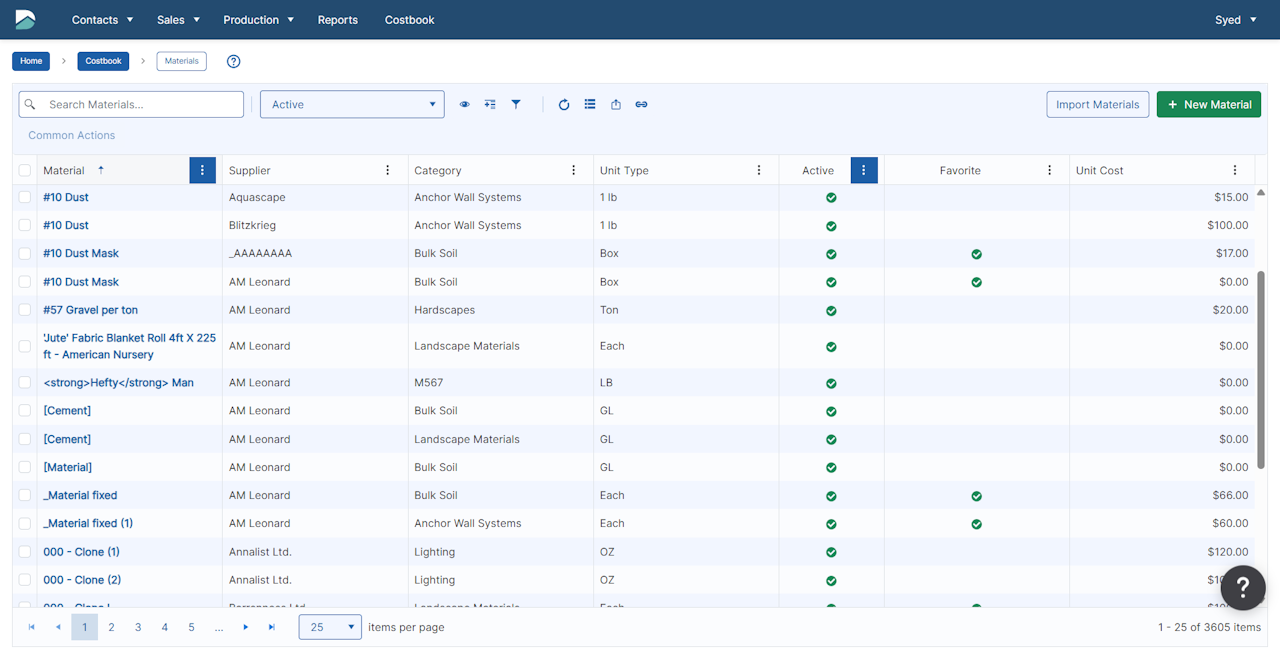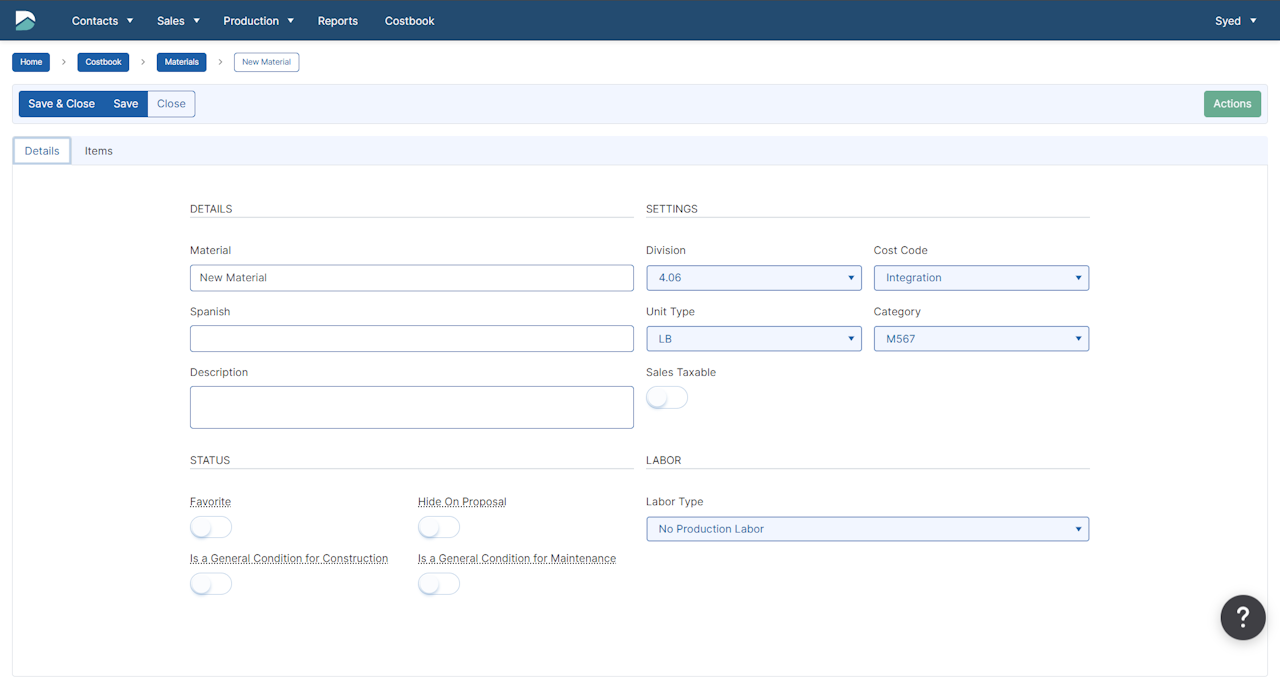

Materials
Add
Go to Costbook - Materials.
Click the + New Material button to open a new page.
Enter the following information
Details Tab
Details:
Material Name (required)
Spanish - (optional - only visible if Spanish is set as the Alternate Language)
Description (optional)
Settings:
Division: The division that this material would typically belong to. This will affect the pricing displayed on this page. This material can be used on an Estimate in any division.
Cost Code: This can be used for grouping (if desired) on Job Management reports.
Unit Type: How will this material be measured. Only applicable if Unit Pricing is enabled.
Category: Category that this material belongs to.
Sales Taxable: Will Sales Tax be applied on this material.
Status:
You can choose to set this as a Favorite so that when you are adding this to an estimate, you can choose to filter by your favorite materials.
Hide on Proposal: The plant will not be displayed on the Proposal even if the specific Plant Type is selected.
You can choose to set this as a General Condition, which enables this cost to then be spread across the estimate automatically, so they are evenly distributed across your different work areas.
Production Labor:
If this material requires labor to install, then you can choose a Labor Type which will then give you options to input how many hours it would take to install this material. You can choose a Labor Type from the drop down then you can enter the following:
Hours/Plant: How long it takes to install the Material measured in hours.
Round to (Hrs.): The precision on how to round the hours.
Items Tab:
The Items tab allows you to enter materials that may have a different supplier and price, the item entry is outlined below:
At the top of the items screen you will be able to change the default Purchasing Tax, Warranty %, Overhead Markup %,Override and set the Profit Margin or set the Material to be Fixed Price, each is explained below:
The Purchasing tax will be set based on the Division that was set in the Details tab, but you can change this by choosing a different tax from the dropdown.
The Warranty percentage is used to calculate the added expense of replacement cost of warranty items, you can type in a new value from the default if the Warranty % is higher or lower for this item.
The Overhead percentage is set based on the Division setting and cannot be overridden, this ensure the full overhead amount is recovered based on the division setting.
The default Profit Margin is set based on the Division setting but can be overridden by clicking the Override checkbox then entering a new percentage.
You can override the price by clicking on the Use Fixed Price checkbox and entering a price manually.
Once you have kept or changed the default settings for the item, you can now enter the details for each Material:
You can set whether the item will be Active or not by checking or un-checking the Active box
Entering a SKU for the Material is helpful when you are updating the cost for the next year, but this is optional.
You can choose a Supplier from the drop down list, if your Supplier is not listed you can enter a new Supplier, further details is located in the Create a Supplier area.
Enter a Unit Cost, the system will automatically calculate the Unit Price using the Overhead and Profit to the unit cost to calculate the unit price.
Click the to add another Material that could be from a different supplier, or which has a different cost, for more details see the Add Multiple Suppliers for a Material section below.
Click the Save and Close button to save the Material to the Costbook or Cancel if you would like to discard the entry.
The Material list can be sorted and filtered as desired, click here to read more about Filters.


